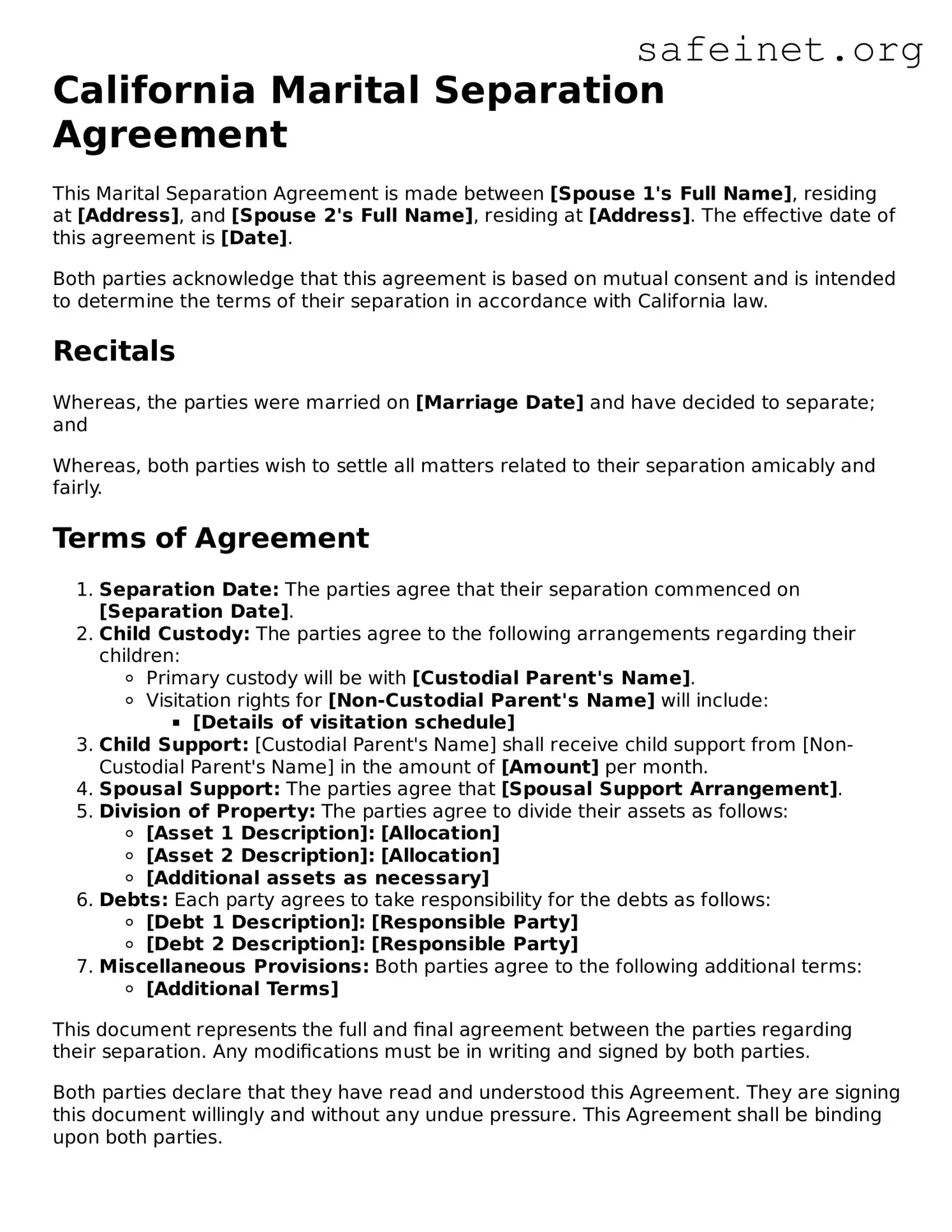What is a California Marital Separation Agreement?
A California Marital Separation Agreement is a legal document that outlines the terms of separation between married spouses. It covers various aspects such as property division, debt allocation, child custody, and support arrangements. This agreement helps clarify the rights and responsibilities of each spouse during the separation process.
Who should create a Marital Separation Agreement?
Any couple considering separation in California can benefit from a Marital Separation Agreement. This document is particularly valuable for couples with children or those who own shared property or assets. It can help minimize misunderstandings and provide a framework for living arrangements and financial obligations moving forward.
Is a Marital Separation Agreement legally binding?
Yes, a properly executed Marital Separation Agreement can be legally binding in California. For the agreement to be enforceable, it must be in writing and signed by both parties. However, it is essential for each spouse to fully understand the agreement and its implications. Seeking legal advice can ensure that both parties’ rights are protected.
Can a Marital Separation Agreement be modified?
Yes, a Marital Separation Agreement can be modified if both parties agree to the changes. It is advisable to document any modifications in writing and have both parties sign the revised agreement. Changes may be required due to shifting circumstances, such as changes in income, employment, or family dynamics.
What happens if one spouse does not follow the agreement?
If one spouse fails to adhere to the terms of the Marital Separation Agreement, the other spouse may seek enforcement through the court. The court can issue orders to ensure compliance with the agreement, and in some cases, sanctions or penalties may be imposed for non-compliance.
Do I need a lawyer to create a Marital Separation Agreement?
While it is not legally required to have a lawyer to draft a Marital Separation Agreement, it is highly recommended. An attorney can help both parties understand their rights, ensure that all pertinent issues are addressed, and reduce the likelihood of future disputes. Proper legal guidance can promote a fair and equitable agreement.
What should be included in a Marital Separation Agreement?
A comprehensive Marital Separation Agreement typically includes the following elements: division of property and assets, allocation of debts, child custody arrangements, child support, spousal support, and health insurance provisions. Customizing the agreement to fit the specific situation of the spouses can provide clearer guidelines moving forward.
How does separation affect child custody?
When parents separate, it is vital to address child custody arrangements in the Marital Separation Agreement. Both legal and physical custody can be determined in the agreement, outlining where the child will live and how decisions regarding the child’s welfare will be made. The best interest of the child should always be the priority in custody discussions.
Can a Marital Separation Agreement help if we decide to reconcile?
Yes, a Marital Separation Agreement can provide a helpful framework in the event of reconciliation. It can clarify unresolved issues that couples may need to address before moving forward together. The agreement can be revisited and modified to reflect the new terms agreed upon by both parties as they decide to resume their life together.
What are the next steps after creating a Marital Separation Agreement?
Once a Marital Separation Agreement is created and signed by both parties, it is important to file the agreement with the court, along with any necessary divorce papers if that is the intended next step. Following the filing, adhering to the terms of the agreement is essential. Ongoing communication between the parties can help manage any issues that arise during the separation period.
